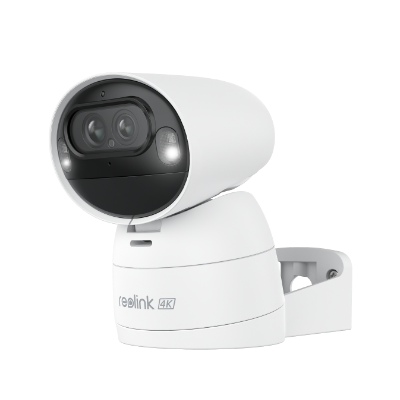Night Vision Wildlife Camera in the UK: All You Need to Know
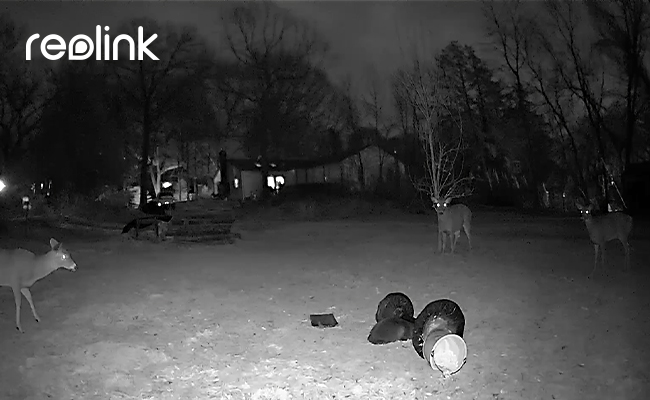
In the UK, night vision wildlife cameras are an excellent tool for tracking animals such as deer, foxes, and rabbits in the dark. Most people believe that night vision cameras are primarily for hunters who need to track and then shoot their target at night. However, if you've always wanted to observe what's going on in your yard or fields at night, or if you're a hobbyist photographer looking to capture images of the numerous nocturnal critters out there, a night wildlife camera might be ideal for you.
These night vision cameras can record and film animals in extremely low light, making them ideal for night wildlife photography.
If you want to discover more about these wonderful nighttime wildlife cameras, you have come to the right place. We would explain what these wildlife night cameras are, their benefits, how they work, and crucial words you should be aware of. Let’s zoom in then!
Benefits of Night Vision
Night vision is an essential feature for wildlife cameras because it allows you to record wildlife activity at night. Many animals are more active at night, so having a camera that can record them during this time is crucial for getting the best possible footage.
In addition, night vision allows you to see in low-light conditions, which can help record shy wildlife or those elusive during the day. While daytime footage can be spectacular, a camera with night vision is a must if you’re serious about wildlife photography.
Furthermore, night vision also allows you to see animals that are active during the night, which can be helpful in research or simply for your own enjoyment. Also, night vision can help you to avoid potential hazards when you are out in the field, such as wildlife that might be dangerous or areas that are difficult to see in the dark.Night vision is an essential feature for wildlife cameras because it allows you to record wildlife activity at night. Many animals are more active at night, so having a camera that can record them during this time is crucial for getting the best possible footage.
How Does a Night Vision Wildlife Camera Work?
It's funny how cameras can see wonderfully in the darkest of settings when our eyes are nearly useless — thank you, technology! But what exactly is the concept behind a wildlife camera seeing under the night sky?
These night vision cameras are specifically intended to capture high-quality images and videos of wildlife in their natural environments. They often have a more powerful lens and a more sensitive sensor than standard cameras, allowing them to take crisp photos in low-light situations.
There are two main types of trail cameras that use LEDs for nighttime photography, those that use infrared LEDs or white LEDs.
Infrared LEDs
Infrared LEDs are used to illuminate a target in the dark, which allows the camera to capture crisp, clear images even in complete darkness. The downside is that this type of camera can only be used in capturing black and white pictures.
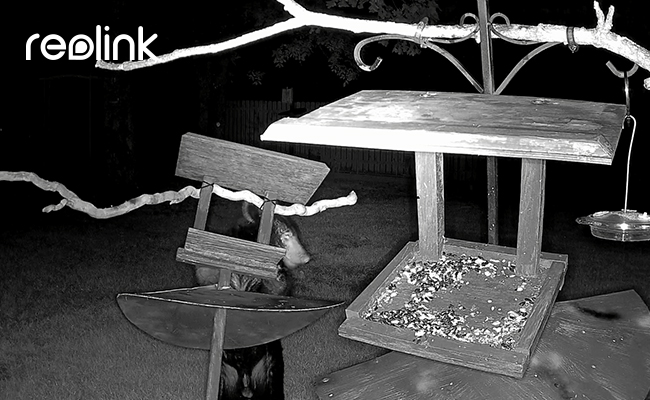
Infrared cameras are best suited for capturing images at night. They use infrared light sensors to detect movement and trigger the camera to take photos when something moves by in front of the lens. This is done without using flash or visible light, so there won't be any noticeable light source in your photos.
White light LEDs
White light LEDs are a light source that is used in cameras to illuminate the scene so that you can see what's going on even when it's dark out. They use a very bright white light to illuminate the subject. As soon as they are triggered, they will light up instantly, which could disturb or scare passing animals or people.
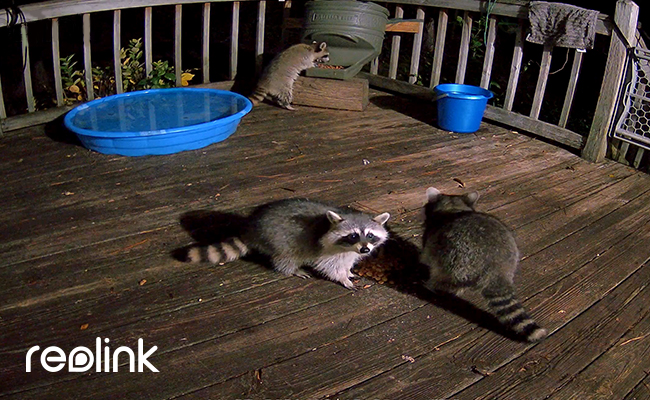
The cameras that use white light LEDs can see in color, but they require more energy to power their flashlights, so they're not as efficient on batteries.
What type of wildlife cameras at night is right for you will ultimately depend on your preferences and specific requirements.
Explaining Relevant Terms in Night Vision Wildlife Cameras
Wildlife Camera IP Rating
One thing to consider when choosing a night wildlife camera is the IP (Ingress Protection) rating. This rating indicates how well the camera can resist against dust and water. The higher the numbers, the better the resistence at night.
IP stands for "ingress protection" and the two numbers refer to the level of protection against water and dust. The first number (5 in the example above) refers to the protection against solid objects, while the second number (6 in the example above) refers to the protection against liquid objects. The higher the numbers, the better the protection.
A waterproof camera is essential for getting clear night pictures of wildlife in the UK, where the weather is often wet and windy, especially at night. So when you’re shopping for a trail camera for nighttime in the UK, make sure to check the IP rating, preferably one with a high rating, to ensure that you get the best model.
Wildlife Camera PIR
PIR stands for Passive Infrared. PIR wildlife night cameras are motion activated and take pictures or videos when they sense heat or movement in front of the camera lens. The PIR sensor is located inside the camera housing and is usually triggered by an object within 25 feet of the camera.
The PIR sensor is a great tool for photographers that capture at night because it allows them to take pictures of animals without being present. This is especially useful when the photographer will only come to review footage during the day.
This sensor is sensitive to infrared light, which is emitted by all objects. When an object enters the field of view of the PIR sensor, the sensor measures the change in infrared light and triggers the camera to take a picture or video.
IR-cut filter for wildlife camera
An IR-cut filter is a piece of glass or plastic that filters out infrared light. With the filter, wildlife cameras can switch between daytime color and nighttime infrared footage.
The IR-cut filter is a filter that blocks out all light except infrared. This means that in the day time, the wildlife camera will work normally and capture color footage, while in the nighttime, when light is too low for color to be captured, it will trigger the switch which then allows all light to go through the IR-cut filter and make the footage black and white but with better image quality.
With infrared surveillance there is a challenge: Infrared light leads to color distortion during the day. For this reason, day/night cameras have an IR-cut filter, which prevents infrared light from penetrating the image sensor during the day. At lower light levels, the filter automatically swivels out of the way so that infrared light hits the image sensor. Additionally, the camera switches to black/white mode, which maximizes the use of infrared light.
The advantages of using an IR-cut filter can be clearly seen in the following example :
On the left is the result of using an IR-cut filter, and on the right is the result of not using one.
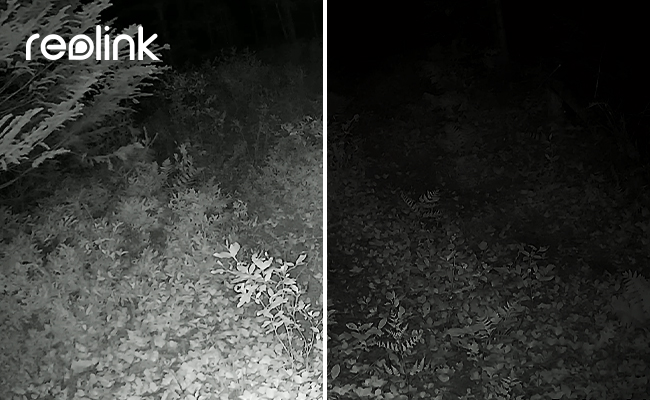
Expert Tips on Handling a Night Vision Wildlife Camera
Here are a few tips you will need to take perfect night wildlife pictures with these cameras, from people who are experts at night wildlife photography.
- Ensure you have enough power to last through the night. Wildlife are most active at dusk and dawn, so you don’t want your camera shutting off in the middle of the action.
- Clear any obstructions from your camera’s view. That means removing large trees and weeds from the wilderness area surrounding your camera. You may need to do this during the day to avoid scaring off the animals at night.
- The angle of your camera is essential for night photography, just as with day photography. If you’re trying to get a close-up shot, you’ll need a telephoto lens. But if you want to capture a wide landscape, you’ll need a wide-angle lens.
What Are the Best Night Vision Wildlife Cameras to Get in the UK
Trail Camera
Trail cameras or game cameras are designed to capture photos of wildlife at night. They typically have a low-light sensor, which allows them to capture images in lower light conditions than other cameras. The trail cameras also have shorter trigger times than other types of cameras, so they can capture animals on video or still images just as they begin to move through the frame.
The infrared lights on the trail camera allow it to take pictures in complete darkness when other cameras would only be able to take blurry shots or none at all. Trail cameras also have easy set-up and installation features, which means you don't have to spend time trying to figure out how your camera works or putting it together before you can use it.
4G/WiFi Security Camera With Pan & Tilt
This type of security camera at night offers many benefits, including the ability to pan and tilt the camera to get a better view of the area and the option to record video and take pictures.
With these 4G night vision cameras, you can view real-time images instantly anywhere you have a cell phone signal, since they use cellular signals just like your phone. Furthermore, they allow you to pan and tilt so that you can see the wildlife all around.
They are easy to set up and use, making them perfect for anyone who wants to start monitoring wildlife populations at night.Let's have a look at following two security camera.
4K Wireless 4G LTE PT Battery Camera - Reolink Go PT Ultra
The Reolink Go PT Ultra offers advanced features for surveillance needs, complementing the capabilities of a night vision wildlife camera . With its 4K 8MP Ultra HD resolution, battery/solar power options, and smart detection functionalities, it ensures clear and reliable monitoring.
Whether for home security or wildlife observation, its wide pan and tilt range of 355° and 140° respectively, along with color night vision, make it a versatile choice for capturing detailed footage day or night.
4K 8MP Wire-Free 4G LTE PT Battery Camera
4K 8MP; Smart Detection; 355° Pan & 140° Tilt; Battery/Solar Powered; Color Night Vision; Smart Real-Time Alert.
4K WiFi PTZ Camera - Argus Track
The Argus Track presents a versatile surveillance solution ideal for both security and wildlife observation needs, seamlessly complementing the capabilities of a night vision wildlife camera.
With its 4K 8MP Ultra HD resolution, solar or battery power options, and advanced features like pan, tilt, and 6X hybrid zoom, it ensures comprehensive monitoring with detailed views. Moreover, featuring color night vision technology, the Argus Track delivers clear footage even in low-light conditions, enhancing its effectiveness for round-the-clock surveillance.
With stable 5/2.4 GHz dual-band Wi-Fi connectivity, it enables seamless remote access and control, making it a reliable choice for various monitoring applications.
4K Dual-Lens Wi-Fi Solar/Battery Camera
4K 8MP Ultra HD, Auto-Zoom Tracking, Pan, Tilt & 6X Hybrid Zoom, Color Night Vision, Dual-Band Wi-Fi.
Conclusion
So there is our guide for using a wildlife camera at night. We hope this guide can be helpful for you and that it has given you some ideas on how to get the most out of your wildlife cameras at night.
If you have any questions or would like to share your own experiences using a night vision wildlife camera, please do not hesitate to leave a comment below. We would love to hear from you!
Search
Be in the Know
Security insights & offers right into your inbox


